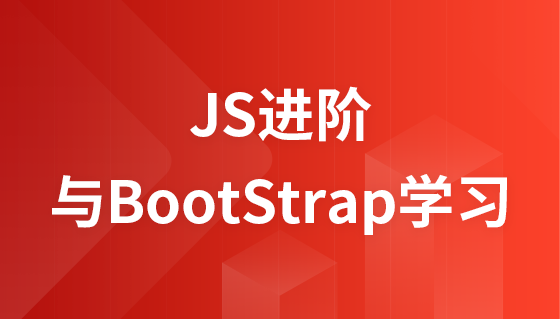
本文深入探讨了如何利用 json schema 的 if/then 结构实现复杂的条件验证,特别是当一个顶级字段的必填性依赖于另一个嵌套字段的特定枚举值时。通过一个实际的订单数据验证案例,文章详细讲解了如何构建精准的条件逻辑,确保数据模型在不同业务场景下的灵活性和准确性,避免常见的验证错误。
在数据交换和存储中,JSON Schema 是定义和验证数据结构的标准工具。然而,业务逻辑往往并非一成不变,某些字段的必填性可能需要根据其他字段的值动态调整。这种“条件必填”的需求,正是 JSON Schema 中 if/then/else 关键字所擅长解决的问题。
设想一个订单管理系统,其中包含不同类型的操作(例如“ORDER”、“TRANSFER”、“WITHDRAWAL”等)。对于类型为“ORDER”的订单,我们要求必须提供商品列表(items 字段);而对于其他类型的订单,items 字段则不是必需的。
最初的尝试可能是在 attributes 内部的 allOf 块中,针对 order_type 为 "ORDER" 的情况,尝试添加 required: ["items"]。然而,这种做法通常会导致验证失败,因为 items 是顶层属性,而不是 attributes 内部的属性。if/then 关键字的应用范围是其所在模式的实例,因此在 attributes 内部声明 required: ["items"] 意味着要求 attributes 对象本身包含 items 属性,这显然与我们的设计不符。
JSON Schema Draft 07 引入的 if、then 和 else 关键字提供了强大的条件逻辑能力:
理解 if 关键字的关键在于,它所描述的条件是针对当前正在被验证的整个数据实例而言的。这意味着,即使条件是基于嵌套属性的值,if 块本身也需要描述如何定位到这个嵌套属性。
为了解决上述问题,我们需要将条件验证逻辑放在顶层,并精确地描述 attributes.order_type 的路径和值。以下是经过优化的 JSON Schema 示例:
{
"$schema": "http://json-schema.org/draft-07/schema#",
"title": "Validaciones sobre el esquema Order",
"type": "object",
"properties": {
"warehouse_id": {
"type": "string"
},
"operation_type": {
"type": "string"
},
"order_id": {
"type": "number"
},
"items": {
"type": "array",
"minItems": 1,
"items": {
"type": "object",
"properties": {
"sku": {
"type": "string",
"minLength": 1,
"maxLength": 50
},
"quantity": {
"type": "integer",
"minimum": 1
}
},
"required": [
"sku",
"quantity"
],
"additionalProperties": false
}
},
"attributes": {
"type": "object",
"properties": {
"order_type": {
"type": "string",
"enum": [
"ORDER",
"TRANSFER",
"WITHDRAWAL",
"DISPOSAL",
"FRESH"
]
},
"etd": {
"type": "string",
"pattern": "^(\d{4})-(0[1-9]|1[0-2])-(0[1-9]|[12][0-9]|3[01])(?:T)(0[0-9]|1[0-9]|2[0-3]):(0[0-9]|1[0-9]|2[0-9]|3[0-9]|4[0-9]|5[0-9]):(0[0-9]|1[0-9]|2[0-9]|3[0-9]|4[0-9]|5[0-9])(?:Z)$"
},
"volume": {
"type": [
"integer",
"null"
],
"minimum": 0
},
"typology": {
"type": [
"string",
"null"
],
"enum": [
"CONVEYABLE",
"NON_CONVEYABLE"
]
}
},
"required": [
"order_type"
],
"additionalProperties": false
}
},
"required": [
"warehouse_id",
"operation_type",
"attributes"
],
"additionalProperties": false,
"allOf": [
{
"if": {
"properties": {
"attributes": {
"properties": {
"order_type": {
"const": "ORDER"
}
},
"required": [
"order_type"
]
}
},
"required": [
"attributes"
]
},
"then": {
"required": [
"items"
]
}
}
]
}通过这种方式,我们精确地表达了“如果数据实例中存在 attributes 且 attributes.order_type 的值为 "ORDER",那么 items 属性必须存在”的逻辑。
让我们通过几个示例来验证这个 Schema 的行为:
1. 无效数据示例:order_type 为 "ORDER" 但缺少 items
{
"warehouse_id": "ARTW01",
"operation_type": "outbound",
"order_id": 41789301078,
"attributes": {
"volume": 1350,
"etd": "2022-11-11T18:25:00Z",
"order_type": "ORDER"
}
}验证结果: 失败。因为 order_type 是 "ORDER",根据 then 规则,items 字段是必需的,但此数据中缺少。
2. 有效数据示例:order_type 为 "ORDER" 且包含 items
{
"warehouse_id": "ARTW01",
"operation_type": "outbound",
"order_id": 41789301078,
"items": [
{
"sku": "SKU001",
"quantity": 5
}
],
"attributes": {
"volume": 1350,
"etd": "2022-11-11T18:25:00Z",
"order_type": "ORDER"
}
}验证结果: 成功。条件满足,且 items 字段存在并符合其自身的模式定义。
3. 有效数据示例:order_type 不为 "ORDER" 且缺少 items
{
"warehouse_id": "ARTW01",
"operation_type": "inbound",
"order_id": 41789301079,
"attributes": {
"volume": 200,
"etd": "2022-11-12T10:00:00Z",
"order_type": "TRANSFER"
}
}验证结果: 成功。if 条件不满足,因此 then 规则不被应用,items 字段不是必需的。
JSON Schema 的 if/then 关键字为处理复杂的、基于数据内容的条件验证提供了强大而灵活的机制。通过精确地定义条件 (if) 和对应的验证规则 (then),我们可以构建出能够适应多变业务需求的健壮数据模型。掌握这种高级用法,将极大地提升数据验证的准确性和系统的可靠性。
以上就是精通 JSON Schema 条件验证:根据枚举值动态设置必填字段的详细内容,更多请关注php中文网其它相关文章!

每个人都需要一台速度更快、更稳定的 PC。随着时间的推移,垃圾文件、旧注册表数据和不必要的后台进程会占用资源并降低性能。幸运的是,许多工具可以让 Windows 保持平稳运行。




Copyright 2014-2025 https://www.php.cn/ All Rights Reserved | php.cn | 湘ICP备2023035733号